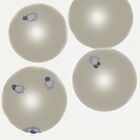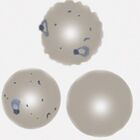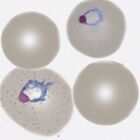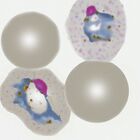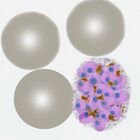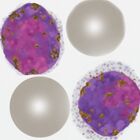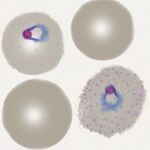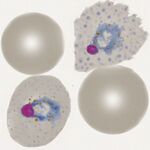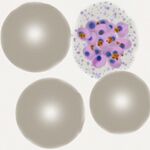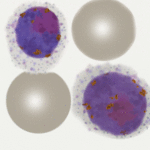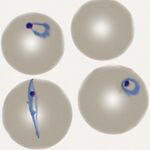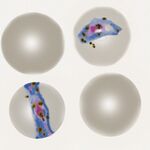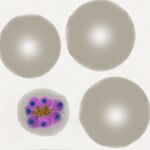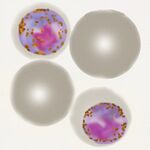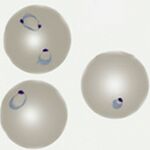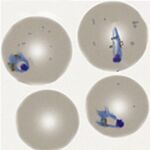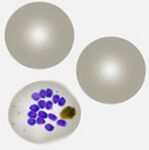Species identification: summary page
From haematologyetc.co.uk
| Plasmodium falciparum |
Summary: The ring trophozoites are small, fine often with typical accolé forms, multiple parasites per cell, and double dot forms. As developmental continues the trophozoites aquire characteristic Maurer's dots and clefts. Schizonts are irregular and "tatty" and are rarely seen in blood unless severe infection, while gametocytes have are characteristicaly elongated (often curved).
| Plasmodium vivax |
Summary
- Large and robust rings that become "amoeboid" during later development
- Red cells become increasingly enlarged and distorted as parasites mature
- Schüffner's dots are visible in appropriately stained thin blood films
- All forms tend to circulate with large schizont and gametocyte forms present
| Plasmodium ovale |
Brief summary
- Ring forms are large and robust and often retained in the late trophozoite stage
- Red cells become moderately enlarged and may have oval shape with characteristic fimbriation
- Schüffner's (James) dots form dusing development and will be seen in appropriately stained samples
- All developmental forms tend to circulate and may be difficult to distinguish from P.vivax
| Plasmodium malariae |
Brief summary
- Small rings (less delicate than P.falciparum) and becoming elongated or solid as parasites mature
- Red cells often small remaining a round shape and with no added dots unless heavily stained
- All forms tend to circulate, characteristically look for "daisy" schizonts and small round gametocytes
- Parasite number is often low
For more information
| Plasmodium knowlesi |
Brief Summary
- Very limited geographical distribution within S.E Asia
- Small fine ring forms resemble those of P.falciparum and may have high parasite count
- Later rings are more solid or elongated similar to P.malariae, although faint dots may be present
- Schizonts & gametocytes are often present and may resemble P.malariae but are less "neat"
- Characteristically red cell size is unaffected, although distortion may be seen
For more information
- click for full description of P.knowlesis morphology
- haga clic para obtener una descripción completa de la morfología de P.knowlesis
- click to visit the gallery of P.knowlesi forms
